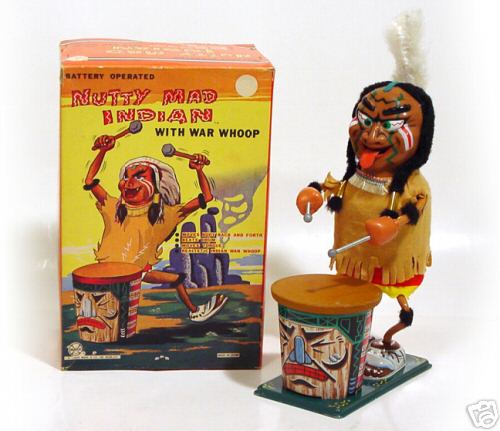By Leon Grodski de Barrera
From the first mention of contact in his journal from the first voyage, Columbus portrays the people—whom he calls “Indians,” thinking he is in India—as at once noble and empty, deft guides and ready-made slaves for the king and queen of Spain. Columbus weaves these ideas prominently through his journal, and this legacy, this habit of mind continues as a prominent thread in the fabric of greater American society to this day, more than 500 years later.
In “Reclaiming Cultural Ownership: Challenging Indian Stereotypes,” Shan Goshorn is determined to reclaim cultural ownership for Native Americans. In her artist statement, Ms. Goshorn, a member of the Eastern Band of Cherokee, said, “History has proven that a way to successfully eliminate a people is to deny them their culture. We remember the obvious attempts of boarding school practices, but we can equate racist commercialism as an attempted genocide as well.”
Goshorn has created an art installation that draws a direct contrast between racist commercialism that necessitates the invisibility of Native Americans within greater American culture and photographs of the everyday lives of people of different tribes as seen through the artist’s eyes.
When entering the gallery, one is immediately struck by the dramatic contrast between the varied and colorful commercial objects presented on several pedestals inside glass cubes that are thoughtfully situated throughout the floor space. These objects employ Native stereotypes and appropriate Native names to sell goods and services neither owned by nor representative of Native Americans. Goshorn presents her black and white photographs, taken through the 1990s, one next to the other at eye level completely lining the room. It’s almost as if they are surrounding the colorful and seductive lies of commercialism with a black and white look at and affirmation of everyday life of native people today.
Also note that writer Leon Grodski de Barrera makes the same point I did in Why We Believe in Columbus. Namely, that Columbus started the myth-making process still at work today. That he did so to dehumanize the Indians so European Christians could justify their crimes.
For more on the subject, see "Take a Picture with a Real Indian" and Why People Don't Care About Indians.


No comments:
Post a Comment